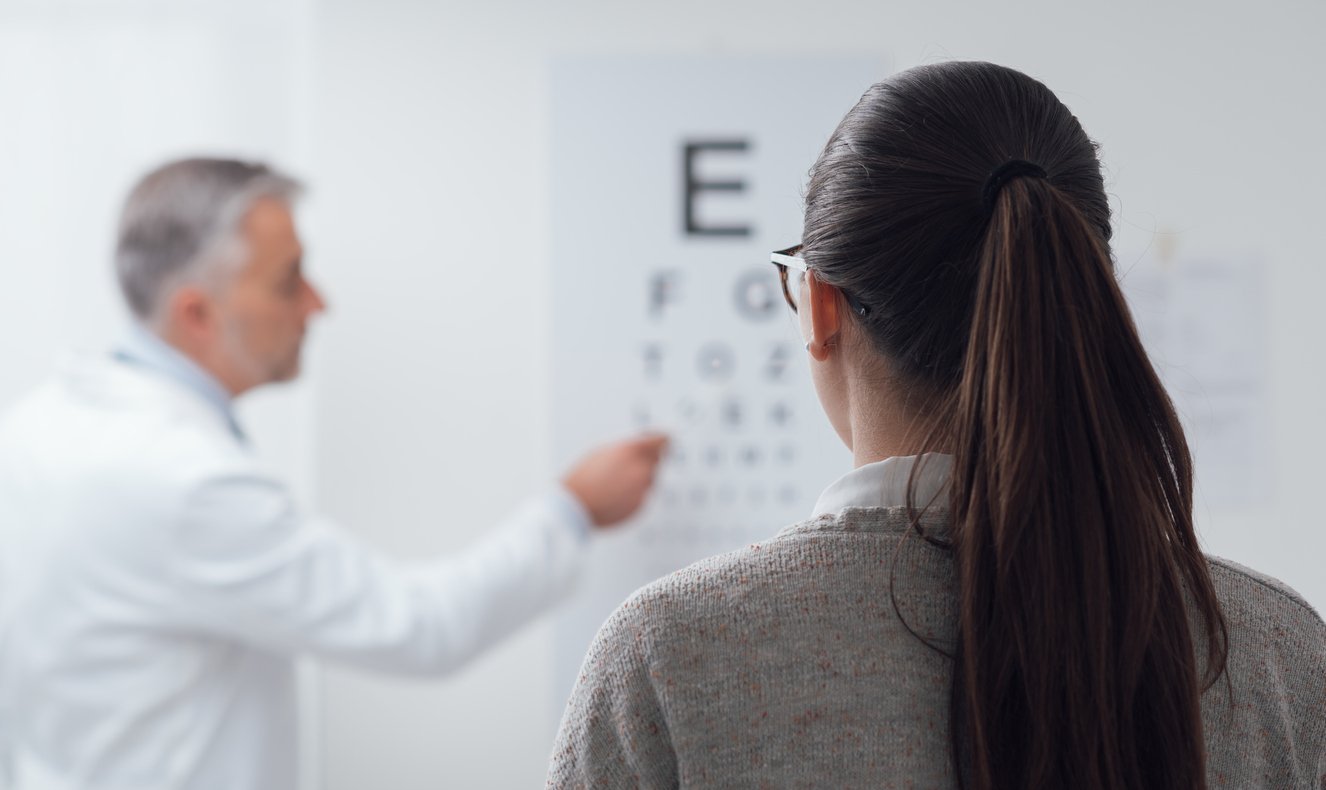Diabetic retinopathy is the leading cause of blindness among working-age adults. According to the 7th edition of the Diabetes Atlas, more than 400 million people globally currently live with diabetes and by 2040 the number will grow to 642 million.
It is estimated by the American Academy of Ophthalmology that 80% of diabetics will eventually develop some level of diabetic retinopathy. Despite the fact that early detection and treatment can prevent up to 95% of vision loss cases, typically only half of patients with diabetes see an eye specialist for an annual retinal exam.1
These numbers should alarm anyone treating patients living with diabetes. One of the best opportunities to help eradicate this leading cause of preventable blindness is to arm primary healthcare providers with a simple and affordable screening system that enables retinal assessment during a patient’s routine office visit.
The Current Standard of Care
The current standard of care for a patient with diabetes is to have a dilated retinal examination by a qualified eye specialist, usually on an annual basis. This standard would be adequate if every person living with diabetes complied with their annual referral to visit the eye specialist—but only half do so.
A New Standard of Care
More than a decade ago, the American Academy of Ophthalmology indicated that single-field fundus imaging—used in most teleretinal screening solutions—can successfully screen for diabetic retinopathy and detect those patients with disease for referral to eye specialists for ophthalmologic evaluation and management.2
While teleretinal imaging technology is not new and has been proven successful, there have been significant barriers to widespread adoption of this technology in primary care settings, mainly:
-
cost
-
device size
-
absence of easily accessible diagnostic interpretation services by a nationwide network of board-certified retinal specialists.
These barriers have now been breached by an innovative new device, the RetinaVue™ 100 Imager. This new device does so in the following ways:
-
The new handheld RetinaVue™ 100 Imager makes retinal assessment in primary care settings truly practical by shattering the price barrier at two-thirds less than desktop fundus cameras!
-
The RetinaVue™ 100 Imager is also very easy to operate. With minimal training, any healthcare professional in the office can capture and transmit high-quality fundus images over the RetinaVue™ Network. Critical features include touchless image capture and autofocus technologies, as well as integrated image quality assessment software.
-
In addition to a design that allows easy and fast image capture, RetinaVue™ P.C.’s national network of fellowship-trained, board-certified retinal specialists will return a complete diagnostic report and referral/screening plan the same day.
“What makes this camera different from everything else on the market is its compact size, low price, and ease of use,” said Dr. Chaum, M.D., Ph.D., Chief Medical Officer, RetinaVue™ P.C. “The RetinaVue 100 Imager provides primary care providers with the opportunity to evaluate patients simply, quickly and cost-effectively. This revolutionary camera is the key to making a very significant impact on reducing vision loss and preventing blindness from diabetes.”
Benefits of Diabetic Retinal Assessment in Primary Care Settings
Screening for diabetic retinopathy in primary care settings enables more efficient management of patients with diabetes and, according to an article by Mansberger et al, in Telemedicine and e-Health, can increase compliance with the diabetic retinal exam (DRE) up to 90% within one-year.3 This goes a long way in helping ensure that vision-threatening diabetic retinopathy is detected early enough to prevent blindness and improve DRE quality metrics for the practice.
Annual retinal examinations are included in the NCQA HEDIS ratings program, the Medicare Advantage “Stars” quality rating program and Medicare quality rating programs. By intercepting patients during routine primary care office visits, healthcare providers can potentially qualify for financial incentives under these programs. In fact, four of the top five commercial healthcare plans provide coverage for RetinaVue™ diagnostic reports in primary care settings. Many healthcare providers enjoy a favorable return on investment within their first year. DRE coding options include CPT codes 92250, 92227 and 92228. Consult your payer partners to understand coding and coverage options.
The RetinaVue™ 100 Imager is also non-mydriatic for increased patient comfort. Patients can enjoy the comfort and convenience of getting their diabetic retinal exam as part of a regularly scheduled visit without the hassle of eye dilation, saving the time, inconvenience, and cost associated with a separate specialist visit.
CME is proud to partner with Welch Allyn in making this innovative product available to our customers. To learn more about how your practice can simply and affordably screen for diabetic retinopathy, visit our website or call us at 800.338.2372 to talk to one of our medical equipment specialists.
About CME: CME Corp is the nation’s premier source for healthcare equipment, turnkey logistics, and biomedical services, representing 2 million+ products from more than 2,000 manufacturers.
With two corporate offices and 35+ service centers, our mission is to help healthcare facilities nationwide reduce the cost of the equipment they purchase, make their equipment specification, delivery, installation, and maintenance processes more efficient, and help them seamlessly launch, renovate and expand on schedule.



